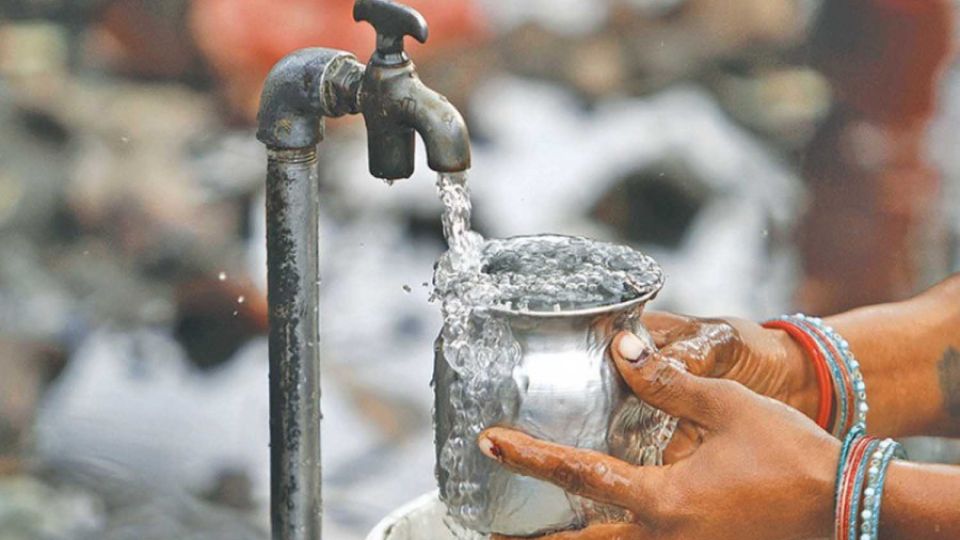August 5, 2022
KATHMANDU – A few weeks ago, the Epidemiology and Disease Control Division deployed health workers to collect samples from a small water supply project at Chandragiri Municipality-4, following the outbreak of cholera in the Thankot area.
Besides collecting samples from the water source, the health workers also sought records of chlorination and monthly water quality reports from the staff.
Staffers, however, could produce neither the records of chlorination nor the monthly reports of water quality.
“Their inability to furnish the details is proof they have neither chlorinated water before supplying to household taps nor have ever carried out quality tests,” Kaushal Subedi, an official at the division, said. “We have tested the samples collected from the source, which were found to have been contaminated with E.Coli and faecal coliform.”
But Chandragiri’s water project is not singular in its sloppiness. Many small drinking water projects throughout the country have been found to be neglecting water purification and other procedures and are distributing contaminated water.
Officials at the division said that negligence of agencies concerned in chlorinating drinking water before supplying it to household taps and checking its quality could cost the consumers dearly.
The three Valley districts—Kathmandu, Lalitpur, and Bhaktapur—have all been witnessing outbreaks of cholera for about five weeks with doctors pointing fingers at the contaminated water as the major cause.
Since June 19, the Valley has reported at least 37 patients who have tested positive for cholera-causing bacteria with cases scattered across Balaju, Bagbazar, Dillibazar, Sanepa, Kapan, Thankot, Khashibazar, Balkhu, and Koteshwar areas. Vibrio cholera 01 Ogawa serotype has been confirmed in stool samples of all infected individuals.
Cholera is a highly infectious disease that causes severe diarrhoea and vomiting, resulting in dehydration, and can lead to death within a few hours if left untreated.
The World Health Organisation says cholera is a global threat to public health and an indicator of inequality and a lack of social development.
Officials at the Ministry of Health and Population said that around 400 samples of water—including that supplied by the state utility, private bottlers, and tanker waters—have been collected in the Valley since cholera was first reported this year.
Testing carried out immediately after the outbreak of the deadly disease showed that around 70 percent of the water samples were contaminated with deadly microbes.
Officials said that the quality of water supplied by the Kathmandu Upatyaka Khanepani Limited (KUKL) to households in the Valley has improved somehow but still 42 percent of water samples are contaminated with deadly microbes.
Subedi, the official at the disease control division, said that during a previous test, 62 percent of samples of the water supplied by KUKL were found contaminated with deadly microbes. “Some improvements have happened but it is still not safe to drink water directly from the tap,” Subedi said.
As for the samples from smaller water supply projects in municipalities of the Valley, almost all were found contaminated, officials said.
Satis Bista, chief of the Health Office, Lalitpur, said 75 percent of water samples collected in Lalitpur were found contaminated. The office had been collecting samples of water for tests regularly after the outbreak of cholera in the Valley.
Bista added that the office has also found the presence of hazardous microbes in samples of water being used by security agencies—the army, the police, and the armed police force.
Due to poor sanitation and hygiene, Nepal is highly vulnerable to water-borne diseases like diarrhoea, dysentery, typhoid, hepatitis, and cholera, with thousands of people getting infected every year.
Chances of the spread of waterborne diseases are especially high during the ongoing monsoon season. Drinking water supplied to households by state-owned agencies and private companies in jars has always been in question.
Public health experts say generally, only one in 10 people who get infected with cholera develop severe symptoms such as watery diarrhoea and vomiting. They warn that apart from cholera, chances of outbreaks of other diseases such as dysentery, typhoid, and hepatitis A and E are high due to poor hygiene and contaminated water.
“Government makes guidelines, rules, and regulations and publishes reports but such things do not protect us,” said Dr Binjawala Shrestha, an assistant professor at the Institute of Medicine. “After all, life is ours and we should take maximum precaution to save ourselves and our people.”
According to the Health Ministry data of last fiscal year, for every 1,000 children under five, 349 suffered from diarrhoeal diseases.
Experts say garbage strewn around the city for months could also have led to the rise in cholera cases as early as June. According to them, the other reason could be the rising cost of living, which may have forced people not to boil water before drinking.
“First of all we do not get sufficient water and the water being provided to us is contaminated,” Shrestha said. “Even if the cost of fuel has risen, we should not compromise on our health and drink boiled water.”
The World Health Organisation says a multifaceted approach is key to controlling cholera and reducing deaths.
Doctors say launching awareness drives and ensuring safe drinking water are the only ways to save people from dying of water-borne diseases, including cholera.
A combination of careful survey, ensuring safe drinking water, maintaining sanitation and hygiene, social mobilisation, and treatment is required to contain the spread of the infection, according to doctors.


